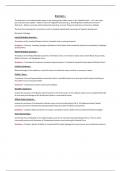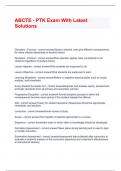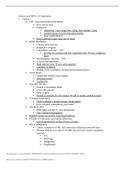Lecture notes
Medicine second year Neurology notes
- Module
- Neurology
- Institution
- University Of Leicester (LE)
1st decile student. 44 pages of cranial nerves and neurology notes. These notes are easy to understand, has the right amount of detail, with a good layout. They also contain flow charts, labelled diagrams, tables. Topics include: brainstem, cranial nerves, sensory and motor pathways, trigeminal n...
[Show more]





